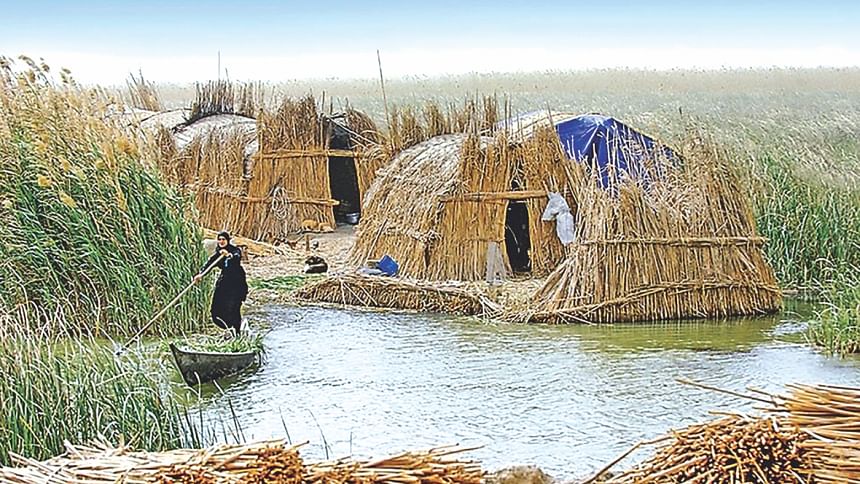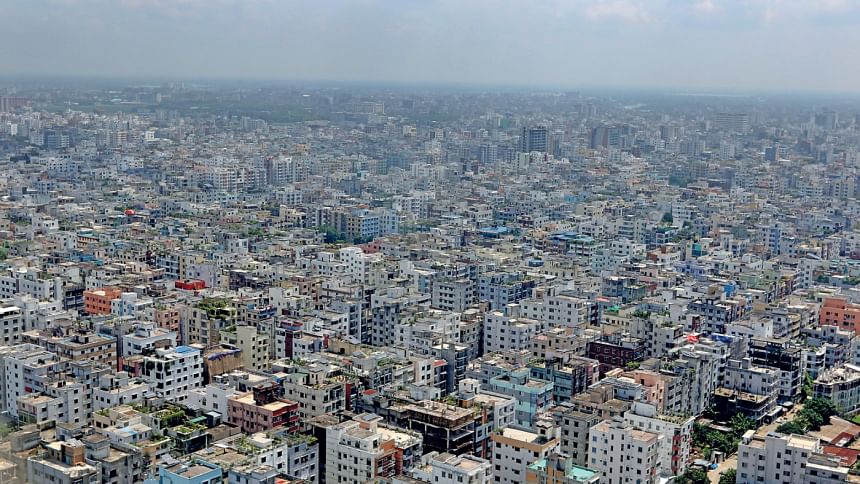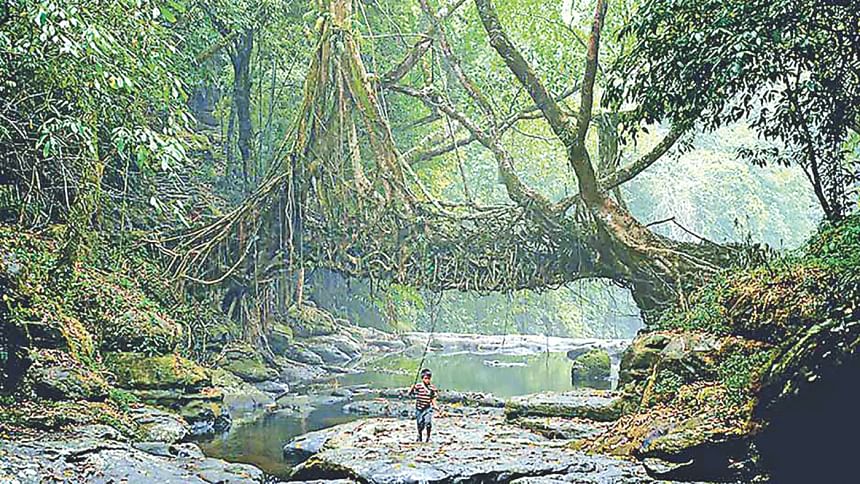An urban demise is on its way: How can we stop it?

"People know what they do; frequently they know why they do what they do; but what they don't know is what what they do does."
― Michel Foucault, Madness and Civilization: A History of Insanity in the Age of Reason
Throughout human history, people have claimed and controlled nature and have built empires of civilisations. Today, however, Mother Nature is angry. In a momentary flicker, a new battle has been forced upon the human-race. A bio-device named COVID-19 has become a pandemic, killing and infecting thousands around the globe. It has left us in forced self-confinement. So far, the urban cores have been the viral epicenters from where the disease stretches to surrounding areas at an accelerating speed. Though the genesis of COVID-19 seemingly started from the wrong choice of food (or, to the orthodox, a repercussion of their unfaithfulness), this menace is no insular occurrence. Its global ubiquity is a result of a multitude of entwined practices that includes remote architecture, urban design and planning practices.

It is a boomerang effect. Nature has finally counteracted the long-practiced capitalist systems of spatial production vis-a-vis city formation that have been regarded as progress. Our indifference to natural conditions, ecosystems and sustainability took nature to an intolerable boiling point. So, the question is: are humans and nature friends, or foes? Are we a part of nature or a split?
Cities have been the emblem of human civilisation for thousands of years. Defying ecological growth and natural orders, and more importantly with a deviance from thousand-year-old indigenous building practices, with globalising forces the cities of today are synthetic and picture perfect. World cities such as New York, London, Dubai, Paris, Beijing, Singapore, Shanghai and many others are all in a race to showcase their architecture. Soaring high-rises have become the zeitgeist (spirit of the age) and pride of each metropolis. Consequently, the land endorsing these developments has turned into a commodity, an asset, a lure to humankind. Inherently a part of earth, it has become power and a controlling device.
But land-claims, land-fill and wet-land encroachment for development and urbanisation resist nature's plans. While most rural counterparts follow vernacular systems that are accommodating to natural ecosystems, the city is a product of the capitalist system. Its grids, plots and division help in ownership and urban infrastructure development. Consequently, they proliferate means of human influence.
Megacity Dhaka has become one of the most expensive stretches of real estate in Asia today. Yet with its unplanned development and unforeseen issues, the city faces a sort of schizophrenia and urban stagnancy. Dhakaites from all walks of life are grabbing land—even the wetlands—which were once the habitat for countless species and wildlife. For instance, Banani, the affluent neighbourhood colloquially meaning "woods," used to have foxes and even cranes on its lake. Dhaka's water and wetland research (2005) reveals that other impressive neighbourhoods such as Ashulia, Bashundhara and others were also built on filled wetlands. Once popular Motijheel was established on a jheel, a quintessential element of Bengal's deltaic landscape which has disappeared. Recent records also show that Dhaka has lost more than 150 rivers in the last five decades and consequently, an even greater number of fish and water-based species. Such land-grabbing has created a deep rift between humankind and nature. Greed and appetite for land, along with a colonial mindset and blind imitation of capitalistic models left behind by the British, are forcing us into unanticipated environmental issues. Theorist Kathleen James-Chakraborty of Dublin University points out how Dhaka's and South Asia's architectural trends are more akin to Western architectural trends and their chronology than to our own heritage. Therefore, she sees a similarity in language yet a rupture in the progression of local building vocabulary that developed from the genius-loci or the spirit of the place.

The omnipresent phenomenon of katcha bazaars (marketplace) and bazaar-like informality is paradigmatic of any South Asian megacity. With huge economic contribution, these informal sectors have become the core of cities like Dhaka. These bostis house a huge workforce that is an absolute necessity for Dhaka. But due to municipal negligence, hyper-density, unrestrained growth and unhygienic sanitation systems and livelihoods, they have become a tumour amid Dhaka's urban landscape and hence are often deliberately ignored. Korail, the largest bosti in Dhaka that serves neighbouring affluent areas, is completely unaware of and unprepared to deal with the COVID crisis. Wuhan's wet-market where COVID-19 germinated is similar to this informal urbanity.
Killing 8,000, infecting 200,000 and affecting the lives of millions, in just a few weeks, the COVID-19 has become the deadliest of all its viral predecessors. Research shows that the COVID-19, the Bird Flu (Avian Flu 2013), the MERS-CoV (Middle East Respiratory Syndrome Coronavirus), and the SARS (Severe Acute Respiratory Syndrome 2003) all came from animals. AIDS most likely came from chimpanzees, the deadly Ebola from bats. Bats and pangolins also possibly started the COVID-19 in Wuhan—one of the largest and most glamorous megacities of central China, populated with beautiful edifices and 11 million people.
A veterinary doctor at the University of Illinois has explained that animals are meant for forestry; it is their habitat. Since we are forcefully taking their homes and turning them into our own, their habitats are destroyed. And so they are moving into human habitats—our cities and even homes, taking refuge in the crevices of urban buildings. The animal and human world are overlapping; food chains are intersecting. Even in Bangladesh, the Nipah-2019 virus was spread from date-juice that was infected by bats and was transmitted via interpersonal contact. Nipah's spread was more limited presumably because it originated in a relatively sparser area and was not as deadly as what we currently face.
Moreover, most buildings across Dhaka open up to next door walls or windows, diminishing the minimum level of privacy or buffer space that is required. Therefore, though most of these edifices successfully emulate Western models, they produce a concrete jungle. They fail to offer anything that complements our distinctively Bengali urban lifestyle. With complete reliance on active cooling systems and glazed facades, they rarely comply with sub-tropical weather conditions.

Meanwhile our bazaars, like Wuhan's fish markets, are an intermediary area where the animal and human world unite. They have become the production zone of recurring deadly diseases. Interestingly, the products of wild animals—whether sold as food or as consumer goods—are predominantly consumed only by the rich minority, yet they contribute largely to the national GDP. This inequality eventually makes policy making more complex and difficult. The recent killing of the rarest white giraffe and its calf in Kenya is an example of such convolution, all of which is bringing forth a reality that we thought existed only on the screen, in movies like Contagion (2011) or Pandemic (2016).
In her book Lo―TEK: Design by Radical Indigenism (2020), Julia Watson, a faculty member of Harvard and Columbia University, proposes to rethink technology and biodiversity in designing urban environments. She suggests alternative solutions that focus on indigenous building practices from antiquity, in which nature can offer her boons as urban infrastructure. She challenges the one-size-fits-all model of institutionalised, commercial measures of architecture and sustainable practices. One such inefficient model is the Leadership in Energy and Environmental Design (LEED) that is standardised by the US Global Building Commission. Like a few other green institutions, LEED, leading in the market, aims for sustainable building solutions which often end up in superficial plug-ins to make edifices that are just categorically "green" by definition. A number of the buildings in Dhaka, particularly in Gulshan and Banani, also follow LEED without considering sub-tropical needs and cultural influence. Watson says, "We can look to cultures that have been living with natural systems and understand how to develop civilisations with complex ecosystems as a grounding for moving forward as designers." Exemplifying tribal lifestyles of Khasi tribes and even fishermen villages of deltaic Bengal, she further explains, "It's a movement toward rethinking how urbanism interacts with nature."
All through history, humans have lived with germs, recurrent plagues, dire diseases like chicken-pox and consequently, developed immunity. But there might still come a plague with which we cannot coexist. Uncontrolled urbanisation and the resultant climate change that seeps its way through the melting ice, polluting the soils, may release nature's genie from its dormancy. A 2005 research reported by the BBC shows that NASA scientists successfully revived a bacteria that had been encased in a frozen pond in Alaska for 32,000 years. The microbes, called Carnobacterium pleistocenium, were frozen since the Pleistocene period. They began swimming once the snow covering them melted. Scientists also succeeded in reviving an eight-million-year-old bacterium that had been lying dormant in ice. These observations and discoveries must push us to think more about our built-environments and force us to ask: how do we build with nature?
What the current situation demands are strong regulatory bodies and laws. Otherwise, our physical and mental health—our lives—will become crippled. We, like a frog, are living in a pot that is being gradually heated. We will stay put and never jump out until we reach the boiling point. But if cautious now, we can perhaps reverse and stop the approaching urban demise and disprove Stephen Hawking, who once said "humankind is greedy, stupid" and that we are the greatest threat to Earth.
Nubras Samayeen is a doctoral scholar of architecture, landscape and heritage at the University of Illinois, Urbana-Champaign.

 For all latest news, follow The Daily Star's Google News channel.
For all latest news, follow The Daily Star's Google News channel. 



Comments